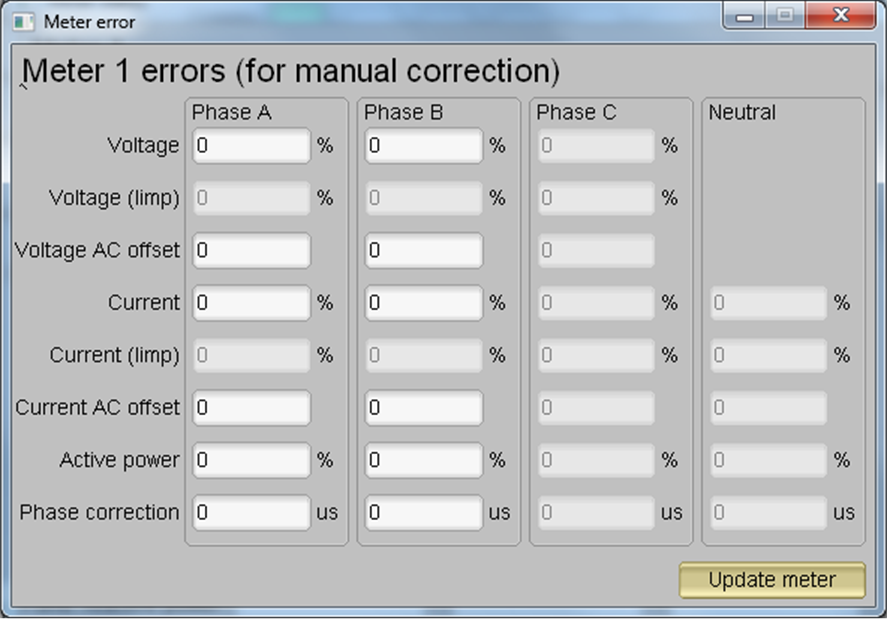TIDUEM8B March 2019 – February 2021
3.2.1.3.2.2.1.1 Voltage and Current Gain Calibration
To calibrate the voltage and current readings, perform the following steps:
- Connect the GUI to view results for voltage, current, active power, and the other metering parameters.
- Configure the test source to supply desired voltage and current for all phases. Ensure that these are the voltage and current calibration points with a zero-degree phase shift between each phase voltage and current. For example, for 120 V, 10 A, 0° (PF = 1). Typically, these values are the same for every phase.
- Click on the Manual cal. button that Figure 3-12 shows. The following screen pops up from Figure 3-14:
 Figure 3-14 Manual Calibration Window
Figure 3-14 Manual Calibration Window - Calculate the correction values for each voltage and current. The correction values that must be entered for the voltage and current fields are calculated using Equation 17:
Equation 17.

where
- valueobserved is the value measured by the TI meter
- valuedesired is the calibration point configured in the AC test source
- After calculating for all voltages and currents, input these values as is (±) for the fields
Voltage and Current for the corresponding phases. - Click on the Update meter button and the observed values for the voltages and currents on the GUI settle immediately to the desired voltages and currents.